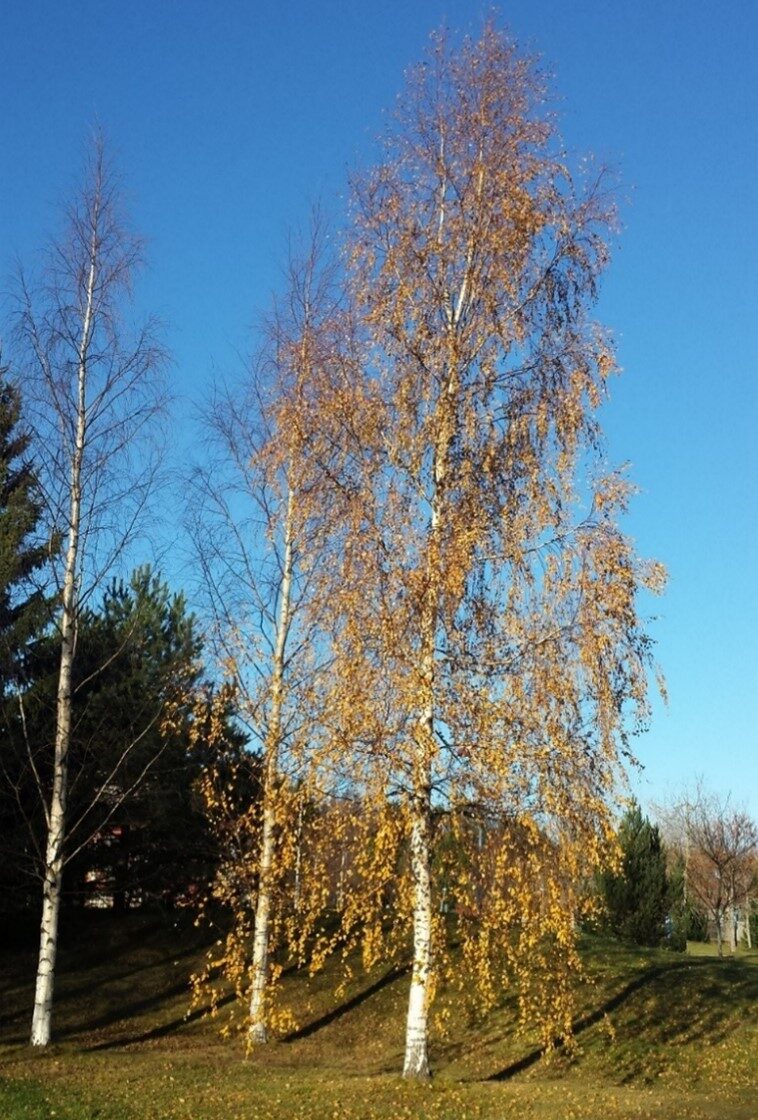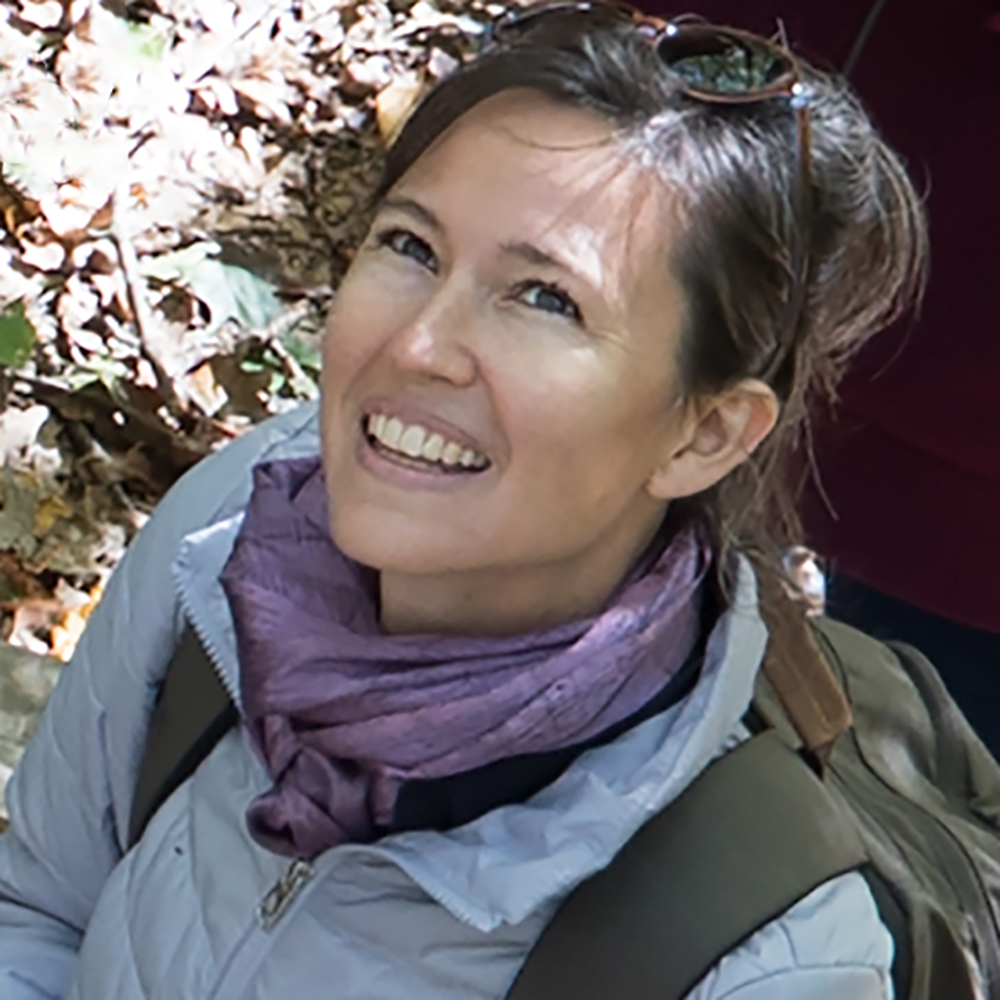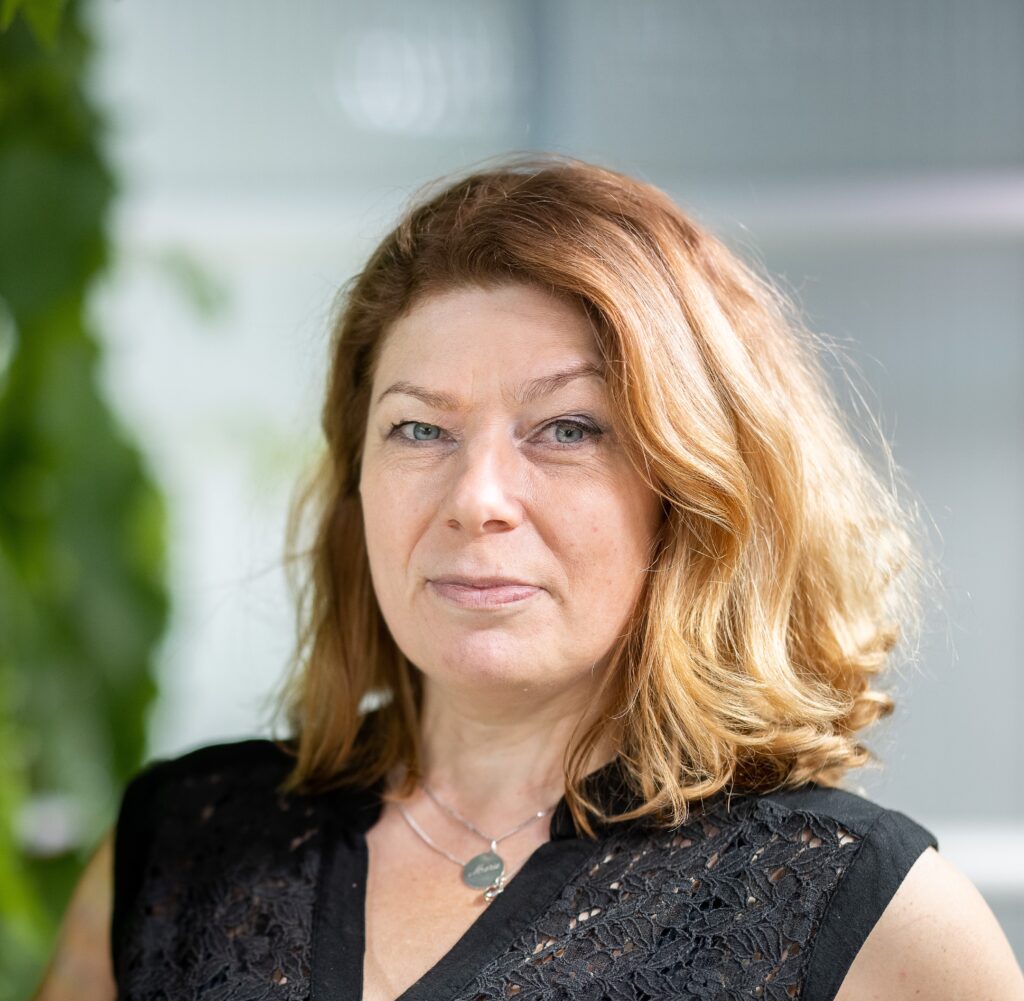19 August 2021
10 questions on how daylight guides plants, animals, and humans through seasons
The Daylight Awareness Week took place online from the 25 to 27 May 2021 and was a great succes thanks to the captivating presentations and the lively exchanges with the audience. During these three days, we gained many exciting insights into multidisciplinary topics around daylight, and were given food for thought. Day 3 focused on how daylight guides plants, animals, and humans through seasons. If you missed the event, you can watch it below. The audience had many exciting questions and some could already be answered during the event. As many more came up, we decided to forward them to the speakers and we are very happy to share their answers with you in this post. Enjoy the reading!
What are the most important factors to consider in urban tree planting design regarding daylight/skylight and sunlight?
There are two main points. First, trees themselves need light to thrive and perform the functions that all life depends upon. Plants’ gas exchange and evapotranspiration are fundamental to creating comfortable living environments, and these physiological processes depend upon light. However, how plants react to different light parameters can differ from species to species. Some plant species can cope better with the lack of light than others. Apart from the fact that, ideally, we would build cities in which adequate light is available, species selection therefore can also be relevant. Second, trees, especially deciduous trees during their growing season, provide shade. They can therefore be seen as natural air conditioners, and ventilators. They are porous light filters and create an airy, shady space. In this sense, trees are different than shutters, awnings, parasols, and other devices that have been created to provide shadow and shade in hot climates. With regards to light in planting design, the distance between trees is an important matter to consider. Trees need space to thrive; at the same time, they can only provide a continuous line of shade along streets, for instance, if they are planted at certain intervals which will depend upon the species, and its respective growing conditions. Just like the species selection, the metrics for tree planting are site-specific. There is no one size fits all.
How difficult is it to have the right amount of daylight for urban tree design in cities? And how can one mitigate a potential lack of daylight?
Lack of daylight for urban vegetation can be an issue in cities which are particularly dense and have many high rise buildings. To afford human and nonhuman living beings with the light they need for healthy living, attention needs to be paid to how we lay out and build our cities in the first place. How we orientate streets and buildings has an impact on how much light reaches the vegetation along our streets and can penetrate through windows.
In light of climate change and the issues in cities (e.g. heat island), are there potential solutions from urban vegetation connected with daylight?
Urban vegetation cannot solve the issues of climate change. However, the recognition that urban vegetation is a fundamental part of the web of life and that in many contexts it can mitigate climate extremes, can help to induce greater empathy towards nonhuman nature and to the environment as a whole. Trees, for example, have always provided humans with shelter (against the sun, rain, and wind; besides providing food and building materials), and they were first planted in cities because of their function to provide shade. They were not only “ornamental trees” but first and foremost they were considered “shade trees.” The provision of public parks, green roofs and walls can help to mitigate the heat island effect, but this is not sufficient. To make a change, we also need to consume less, for example.
It seems most obvious that the indigenous people have long-term experiences and wisdom regarding daylight in its interaction with their environment and lives. How do you envision to give voice to this knowledge?
As an anthropologist I listen to indigenous experts and record the experiences that they choose to share. This know-how can be beneficial to all of humanity, because it’s the result of millennia of close observations of nature. It is usually expressed in narratives, songs, daily activities or stories, and less often, in writing. What I do as a scientist is make careful observations and describe the phenomenon for a general audience. For example, how do people on remote tropical islands survive catastrophic weather events? I spent a week in Vanuatu observing and participating in the construction of a traditional house made entirely of plants, without nails or any manufactured materials or metal, yet able to safely shelter its inhabitants from a category 5 cyclone. This video on YouTube shows some of the process of building that house. While we can’t live in that environment, we can visit it and learn from these experts and then carry over some sustainable practices to our everyday life.
Are people from Vanuatu not attracted to switch to a western way of life using artificial light instead of living in sync with daylight? What motivates them to keep their traditional way of life?
One thing I’ve come to admire about Vanuatu is that they are fully connected to the modern world, for example they have smart phones and are active on social media, yet they very robustly maintain traditional lifeways such as fishing in wooden canoes, and building houses from plants. They are able to make a deliberate decision about what modern technologies to adopt and which to avoid. For example, they do use solar powered lights somewhat, which alters the typical daylight rhythm, but they also remain very attuned to sunlight, moonlight, and seasonal cycles. They have figured out how to be traditional and modern at the same time, which is impressive.
In your experience, does climate change impact the way people live and follow the nature in Vanuatu?
People who live on low-lying Pacific Islands are most vulnerable to climate change, and they have to adapt. They are doing this by going back to traditional lifeways, realizing that modern architecture does not offer enough protection form cyclones, and that food they harvest by themselves from the sea is healthier and more sustainable than imported canned goods. Since they are also very keen observers of nature, they can tell us about miniscule changes (for example a change in fish migration patterns) that are leading indicators of climate change.
Is there any scientifical knowledge about the difference between vegetables growing in the glasshouses or directly in daylight/sunlight?
Plants need blue and red wavelengths to photosynthesise and grow well. Some of these wavelengths, for instance, long wavelength red light (far-red) and UV light, are usually emitted at low levels by commonly available lightbulbs or Light Emitting Diods (LEDs). In Nature, far-red light has an important impact on the timing of flowering. For vegetables grown for their antioxidants or flavour, supplementation with UV or other wavelengths to mirror more natural lights may be beneficial to boost content. There are many studies on this, and Jones (2018) is an excellent review that includes references to such work. Striving towards more natural irradiance and spectral composition of light under controlled conditions is important for promoting all aspects of plant development, growth and reproduction, as well as boosting levels of nutrients and other important plant compounds in cultivated crops.
How do different latitudes influence the natural internal clock and growth of plants?
Plant clocks adapt under natural conditions and ‘reset’ or ‘entrain’ their rhythms to local conditions using both irradiance (flux density; colloquially ‘light level’) and length of day (which is referred to as the ‘photoperiod’). Light and temperature are generally linked in nature so these cues reinforce each other and inform the plant about local time. Further, the plant’s metabolism will add internal signals to support this information. The clock system contains several feedback loops that balance gene expression and protein levels to drive internal oscillations. Individual components are most sensitive to light, temperature, and/or metabolic cues. Depending on which signals are perceived, the clock mechanism will speed up, slow down or rephase the network so that activities like gene expression or leaf movements oscillate in synchrony with the plant’s environment and reach their peak activities at the ‘right’ time of day, for instance to optimise the collection of solar energy and carry out photosynthesis (as illustrated in the comic book ‘Enlighten your clock’). The many different genes and gene products involved in this mechanism enable great flexibility, ensuring the plant is matched correctly to its local time. We have written a chapter on plant circadian rhythms intended for teaching: McWatters & Eriksson (2016).
Each plant, however, has an inherent, genetic capacity that determines the flexibility of its clock. Some individuals inherit a clock that runs faster, and other plants have a slower clock. This variation will affect the peak activity of leaf movements and other processes that determine how efficiently an individual plant can harvest light and produce energy. Hence, differences in clocks between plants affect how well they grow and compete for resources and ultimately shape natural plant communities. Such variation also impacts plants used in, for instance, agriculture, urban planning, and forestry. Different species of plants have different life cycle lengths, ranging from a single season (annuals) to multiple years (perennials). Despite these differences, their clocks play similar roles in timing their growth and reproduction or, in longer living plants, entering seasonal rests when adverse climatic conditions limit growth. In many species the speed of a plant clock decelerates when plants are moved to higher latitudes. This helps match the period of growth and productivity to the long days of summer, and possibly also primes trees and shrubs to expect a shorter growth period enabling them, for instance, to enter bud set earlier in autumn and develop winter hardiness. Examples of this include an early study in barley by Fure et al. (2012), which is further referenced and explained here, and another in tomato by Müller et al. (2015), which is further referenced and explained here. Work in my laboratory also showed that Populus trees with reduced expression of core clock genes have faster clocks, shorter critical daylength, and delayed bud flush, thus resembling plants from more southern latitudes (Ibanez et al., 2010).
Can plants living under some latitudes adapt to other latitudes with a similar climate?
Yes, this is possible and Botanical Gardens are brilliant places to observe how introduced collections of species or ‘ecotypes’ that did not naturally evolve to grow in that locale – but are able to do so when introduced. Successful growth depends very much on a species’ individual temperature and light requirements. Trees from different families have very different requirements, which affects their sensitivity. Bud set of tree species from the Prunus family are primarily temperature-sensitive while trees from the birch and Populus families are daylength-sensitive, see Cooke et al. (2012). Sweden has a large latitudinal cline and therefore there are vast differences in photoperiod between the north and the south of the country. When daylight-sensitive birches are collected across this cline and planted at a midrange latitude, their growth cessation and bud set will show marked differences between trees from the north and south, as is seen in a collection of this type planted at the Swedish University of Agriculture in Uppsala, Sweden. In this collection, the birches adapted to the northern climes stop growth and set buds early, relative to trees from lower latitudes. Since northern accessions (‘ecotypes’) require longer days to fulfil their growth capacity, they show slower growth than trees with a closer match between their photoperiodic requirement and the natural daylengths at their locale during the summer growing season. The circadian clock helps set the photoperiodic requirement of an individual tree as well as aspects of growth regulated by temperature, although the temperature-regulated pathways are less well understood.
How can we explain that certain plants like Victoria amazonica are active during the night?
Many plant species have coevolved with, and are pollinated by, specific pollinators. Strategies to enhance pollination and thereby reproductive success may include opening flowers at a specific time or emitting scent at a particular time of day. Timing of such processes may be driven directly by rhythmic changes in the environment and/or under circadian clock control: it depends on the individual plant species. The scientist Carl von Linné studied the movements of petals and suggested that one could use the openness of a collection of plants planted in the same flowerbed to tell the time, a type of ‘flower clock’ or ‘Horologium Florae’ Martinsson (2004), more information at Uppsala University website. Elucidating clock-controlled mechanisms at all levels, from the molecular through the biochemical to the physiological, as well as the ecological aspects of clocks, is very important for understanding both circadian clock function and evolutionary biology. It will help us reveal their mechanisms and may enable the introduction of desirable traits into breeding programmes, or perhaps allow future innovations such as synthetic plant biology. Detailed studies on species with interesting biology and timing such as the giant waterlily (Victoria amazonica) thus help build an important knowledge base.

Birch trees, as Maria E. Eriksson explains above, are sensitive to photoperiod, which regulates growth and bud set in particular. The three birch trees shown in this photo grow in the Umeå University campus, Umeå, Sweden, and have different photoperiodic sensitivity or ‘critical daylength’ requirements for growth. The trees on the left stopped growth and set buds earlier than the tree on the right and therefore shed their leaves much earlier, making it easy to spot this difference in autumn.

These photos were taken at slightly different times in the afternoon and evening on two consecutive days, thus with very similar daylengths. They show that some flowers have distinct open and closed petal timing as noted by Carl von Linné (1751), as referenced above. Maria E. Eriksson took these photos of open and closed flowers of two of the many species explored by von Linné, and one additional species.



Comments